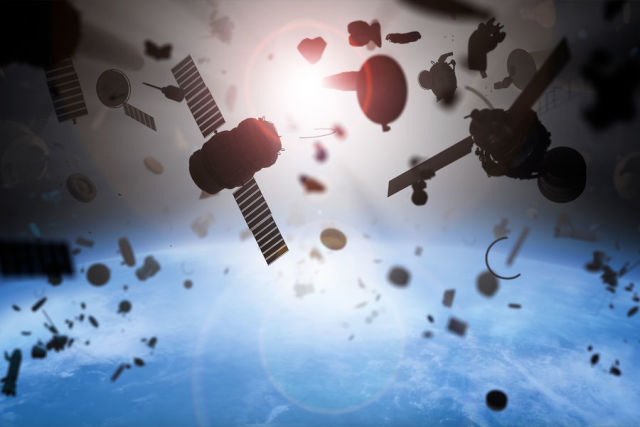When using this method, scientists propose using pyrotechnic devices to divide the design of the device into component elements connected by flexible cables
MOSCOW, August 9. /tass/. Specialists of JSC "Information Satellite Systems named after Academician M. F. Reshetnev" (part of Roscosmos) has developed and patented a method for the disposal of spacecraft through the aerodynamic action of the earth's atmosphere, which will reduce the time for cleaning the universe from space debris from centuries to several months. The relevant document was distributed by the Federal Institute of Industrial Property (available to TASS).
The invention can be used in the design of spacecraft in order to prevent clogging of outer space at the end of the service life. "The period of stay of unused objects in orbit can be reduced from centuries to several months," the document says.
When using the latest method of spacecraft disposal, it is proposed to divide the structure of the spacecraft into component elements connected by flexible cables by means of pyrotechnic devices. Together, a large-sized structure with a large diameter, located normal to the direction of ballistic flight, should be obtained.
"Then, by means of an artificial plasma formation generator (IPO), a gas-dust medium is created, ensuring that the voids between the elements of the spacecraft are filled, and also the diameter of the IPO is increased by surrounding the disposed structure from the outside, while the IPO creates electrostatic interactions of the gas-dust medium with the structural elements, which additionally leads to an increase in the area of the mid-section of the structure with IPO, thus, the values of aerodynamic forces increase and braking of the spacecraft is achieved at the end of the active existence period in order to transfer to a lower orbit with subsequent combustion in the atmosphere," the document says. Among the authors of the invention, the general designer of JSC "Information Satellite Systems named after Academician M. F. Reshetnev" Nikolay Testoyedov.
Earlier, the head of the information and analytical center of TsNIIMash JSC (Central Research Institute of Mechanical Engineering), Igor Bakaras, reported in an interview with TASS that currently there are about 7,000 tons of space debris and 3,000 tons of operating spacecraft (including the International Space Station) in near-Earth orbits.
According to TsNIIMash, the low-orbit region of near-Earth space with a height of up to 2,000 km, which is most often used for spacecraft operation, is the most clogged. Currently, there are more than 3,000 functioning spacecraft, as well as about 14,000 objects of space debris larger than 10 cm.

